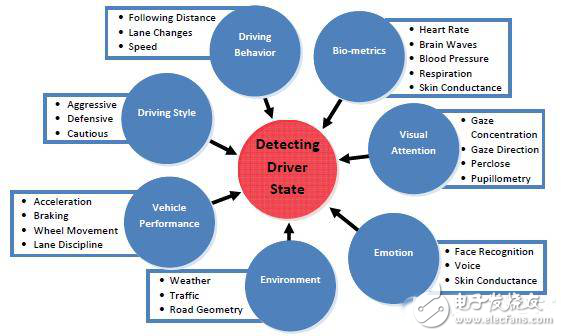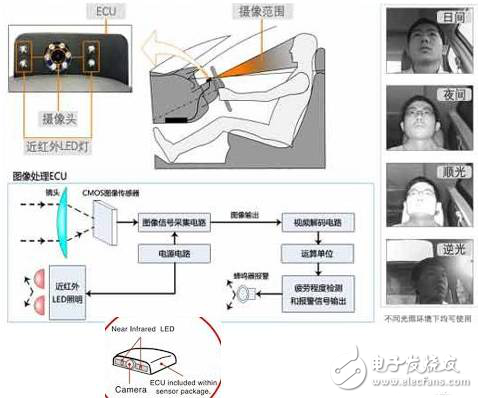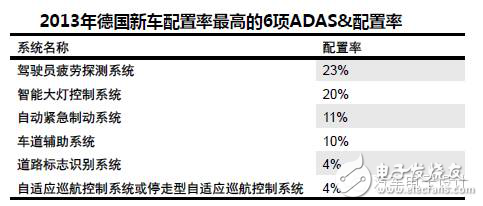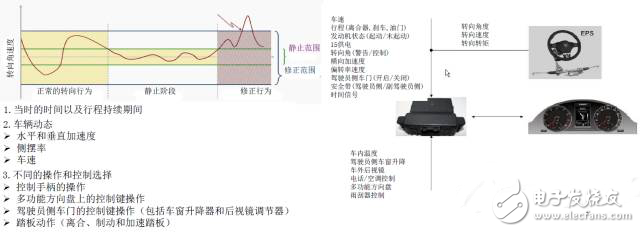Do some exchanges in the WeChat group, and then tidy up the issue here. We look at driver status monitoring in several ways: 1) Existing system deployment: mainly divided into direct monitoring and indirect monitoring, as well as the fusion of various data, and some wearable methods 2) Method of identifying the system: It can be comprehensively analyzed from driving behavior, driving style, vehicle characteristics, environmental conditions, etc., or can be inferred by physiological factors, external expressions and emotional factors. 3) The role of DM in smart driving in the future: This is mainly to study the important role of the entire DM in the future of driving. There are several existing systems: A) Direct monitoring, mainly realized by infrared cameras, developed by Denso on Toyota's Lexus and Hino carts. The system architecture is as follows: A NIR infrared sensor + package together processor The DM controller mainly includes image recognition technology = "face image for analysis and processing, detecting the contour of the face and the position of the eye, nose, etc. = "According to the positional relationship of these parts to determine the face orientation =" in the state of inattention? According to the opening of the driver's eyelids and the frequency of blinking movements, etc. = "sleeping state"? Measuring sleepiness and attention = "directly monitors real-time parameters such as closed eye speed, head direction Measuring stress and emotional state = "Monitoring heartbeat changes Security and personalization: more content can be derived from the original DM, such as driver identification or gesture recognition, thus opening up more business models. Using NIR infrared illumination in the image can maintain balanced performance under different lighting conditions. harm: The arrangement of the camera and infrared LED is very difficult, because it is easy to notice to the driver. High cost Some users are worried about monitoring B) Indirect monitoring I am looking at Zosi's picture [1], I don't understand why the deployment rate of German DM is so high. Later, I carefully analyzed the method and found that German manufacturers did this. The fatigue identification system is a support and prevention function: The driver's fatigue can be detected according to the driver's steering action. It will evaluate data related to driving conditions (speed of vehicle, use of accelerator pedal, use of direction lights, current time, driving time, etc.) The comfort system (air conditioning, telephone, etc.) used and set by the driver The core parameters are steering angle or steering angular velocity If the driver concentrates, a continuous slight reverse steering action can be observed during driving. Make the vehicle overcome the uneven road and keep the vehicle on the correct route If there is no reverse steering action for a certain period of time, then suddenly a very obvious reverse steering action is detected = "The driver's attention is decreasing. Solar Street Light,Solar Street Light Price,Solar Powered Street Lights,All In One Solar Street Light jiangmen jieken lighting appliance co.,ltd , https://www.jekenlighting.com


